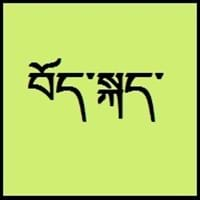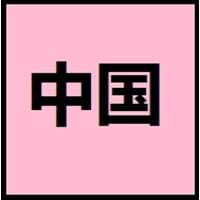Countries
China, Nepal
China, Hong Kong, Macau, Singapore, Taiwan
National Language
Nepal, Tibet
China, Taiwan
Second Language
Not spoken in any of the countries
Republic of Brazil
Speaking Continents
Asia
Asia
Minority Language
China, India, Nepal
Indonesia, Malaysia
Regulated By
Committee for the Standardisation of the Tibetan Language
Chinese Language Standardization Council, National Commission on Language and Script Work, Promote Mandarin Council
Interesting Facts
- Tibetan dialects vary alot, so it's difficult for tibetans to understand each other if they are not from same area.
- Tibetan is tonal with six tones in all: short low, long low, high falling, low falling, short high, long high.
- Chinese language is tonal, since meaning of a word changes according to its tone.
- In Chinese language, there is no grammatical distinction between singular or plural, no declination of verbs according to tense, mood and aspect.
Similar To
Not Available
Not Available
Derived From
Not Available
Not Available
Alphabets in
Tibetan-Alphabets.jpg#200
Chinese.jpg#200
Scripts
Tibetan alphabet, Tibetan Braille
Chinese Characters and derivatives
Writing Direction
Left-To-Right, Horizontal
Left-To-Right, Horizontal, Top-To-Bottom
Hello
བཀྲ་ཤིས་བདེ་ལེགས། (tashi delek)
您好 (Nín hǎo)
Thank You
ཐུགས་རྗེ་ཆེ་། (tujay-chay)
谢谢 (Xièxiè)
How Are You?
ཁྱེད་རང་སྐུ་གཇུགས་བདེ་པོ་ཡིན་པས།
(kayrang kusu debo yimbay?)
你好吗? (Nǐ hǎo ma?)
Good Night
གཟིམ་ལཇག་གནང་དགོས་། (sim-jah nahng-go)
晚安 (Wǎn'ān)
Good Evening
དགོང་དྲོ་བདེ་ལེགས།
晚上好 (Wǎnshàng hǎo)
Good Afternoon
ཉིན་གུང་བདེ་ལེགས།
下午好 (Xiàwǔ hǎo)
Good Morning
སྔ་དྲོ་བདེ་ལེགས། (nga-to delek)
早安 (Zǎo ān)
Please
thu-je zig / ku-chee.
请 (Qǐng)
Sorry
ཀོང་དགས་། (gawn-da)
遗憾 (Yíhàn)
Bye
ག་ལེར་ཕེབས་། (kha-leh phe)
再见 (Zàijiàn)
I Love You
ང་ཁྱེད་རང་ལ་དགའ་པོ་ཡོད་ (nga kayrâng-la gawpo yö)
我爱你 (Wǒ ài nǐ)
Excuse Me
དགོངས་དག བཟོད་དུ་གསོལ། ཐུགས་རྗེ་གཟིགས།
劳驾 (Láojià)
Dialect 1
Central Tibetan
Mandarin
Where They Speak
China, India, Nepal
China, Malaysia, Singapore, Taiwan
Dialect 2
Khams Tibetan
Wu
Where They Speak
Bhutan, China
China, United States of America
Dialect 3
Amdo Tibetan
Yue
Where They Speak
China
China, Malaysia, Singapore, Vietnam
Speaking Population
Not Available
Second Language Speakers
Not Available
Native Name
བོད་སྐད་ (pö-gay)
中文 (zhōngwén)
Alternative Names
Bhotia, Dbus, Dbusgtsang, Phoke, Tibetan, U, Wei, Weizang, Zang
Not Available
French Name
tibétain
chinois
German Name
Tibetisch
Chinesisch
Pronunciation
Not Available
Not Available
Ethnicity
tibetan people
Han
Language Family
Sino-Tibetan Family
Sino-Tibetan Family
Subgroup
Tibeto-Burman
Not Available
Branch
Not Available
Not Available
Early Forms
Old Tibetan, Classical Tibetan
No early forms
Standard Forms
Standard Tibetan
Standard Chinese
Language Position
Not Available
Signed Forms
Tibetan Sign Language
Wenfa Shouyu 文法手語 ("Grammatical Sign Language", Signed Mandarin (Taiwan))
Scope
Not Available
Individual
ISO 639 6
Not Available
Not Available
Glottocode
tibe1272
sini1245
Linguasphere
No data Available
79-AAA
Language Type
Not Available
Living
Language Linguistic Typology
Not Available
Subject-Verb-Object
Language Morphological Typology
Not Available
Analytic, Isolating
All Tibetan and Chinese Dialects
Most languages have dialects where each dialect differ from other dialect with respect to grammar and vocabulary. Here you will get to know all Tibetan and Chinese dialects. Various dialects of Tibetan and Chinese language differ in their pronunciations and words. Dialects of Tibetan are spoken in different Tibetan Speaking Countries whereas Chinese Dialects are spoken in different Chinese speaking countries. Also the number of people speaking Tibetan vs Chinese Dialects varies from few thousands to many millions. Some of the Tibetan dialects include: Central Tibetan, Khams Tibetan. Chinese dialects include: Mandarin , Wu. Also learn about dialects in South American Languages and North American Languages.
Tibetan and Chinese Speaking population
Tibetan and Chinese speaking population is one of the factors based on which Tibetan and Chinese languages can be compared. The total count of Tibetan and Chinese Speaking population in percentage is also given. The percentage of people speaking Tibetan language is Not Available whereas the percentage of people speaking Chinese language is 16.00 %. When we compare the speaking population of any two languages we get to know which of two languages is more popular. Find more details about how many people speak Tibetan and Chinese on Tibetan vs Chinese where you will get native speakers, speaking population in percentage and native names.
Tibetan and Chinese Language Codes
Tibetan and Chinese language codes are used in those applications where using language names are tedious. Tibetan and Chinese Language Codes include all the international language codes, glottocodes and linguasphere.





